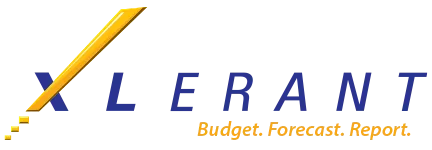The Customer
EMCOR Group, Inc. is a worldwide construction and mechanical corporation with 80 diverse businesses in the United States, Canada and overseas. With $5 billion in annual revenue, EMCOR is a Fortune 500 company with headquarters in Norwalk, CT. Although it is a global enterprise, the company maintains a low overhead in its corporate office, which houses accounting, legal, human resources, marketing, compliance, and the company’s executive team. Overall, there are more than 20 budget holders in the corporate office.
Bill Feher was controller of EMCOR when he first worked with the XLerant team, but has since been promoted to Vice President, running the internal audit function. Feher’s insight into a complex organization’s budgeting needs became a touchstone for XLerant’s founders as they created a product that balances ease of use with financial controls and information technology standards. He had very specific ideas on what he wanted in a budgeting system.
The Problem
Despite its global presence and status as a Fortune 500 company, EMCOR lacked a sophisticated system for forecasting or budgeting across the enterprise. “We had been using Excel spreadsheets but they caused a lot of duplication of efforts,” Feher states. “People were overwriting formulas and handing in unbalanced spreadsheets that were incomplete. We then had to consolidate the spreadsheets, which meant we had to check every line for discrepancies. We simply didn’t have enough people to handle the manual effort.”
A series of budget misses that were unacceptable finally convinced the financial team that a better system was necessary. That, along with the turn-on-a-dime nature of the construction industry, led Feher to look for a commercially available enterprise system. “We invited input from all our users,” Feher recalls. “Our budget misses were due in large part to improper planning and a lengthy budget process. Our company is involved in over 7000 contracts. By the time we got to budget input, consolidated the results and got approval, it was three quarters into the fiscal year. That was just too late to make any necessary changes due to market conditions.”
The Evaluation
EMCOR first moved to Hyperion Planning, a top-level planning application. It fulfilled EMCOR’s need for planning purposes, but users found it lacked the flexibility to accommodate drilled-down details or human resources functions such as scenario and compensation planning. And there were other unpleasant surprises. Having 12-15 simultaneous users on Hyperion tended to crash the system. “Everyone was complaining about the budget process, but no one wanted to fix it,” Feher declares. “People don’t like change and the Hyperion planning implementation did not go well. This made the next move more difficult.”
Bill decided he wanted to be on the leading edge of designing a new budget product. “I thought, ‘Wouldn’t it be great if you could guide someone through the budget process who didn’t understand accounting?’” Discussions with Lawrence Serven and Charles Pevsner, XLerant’s founders, morphed into a collaborative effort on a product that eventually became BudgetPak. “I believed these guys would deliver what they said,” said Feher. “They were former budgeting people at large companies, and they knew their stuff.” EMCOR became the beta customer for XLerant and licensed BudgetPak before it was even coded.
The Implementation
EMCOR purchased Hyperion Planning in late 2004, and kept it while BudgetPak was under development. The first budget cycle BudgetPak was used for was in 2005, and they’ve used it ever since. In 2008 EMCOR made the decision to phase out their use of Hyperion Planning.
From first implementation, it met Feher’s expectations for simplicity. “I like to make things easy for our users. I want our budget holders to focus on the method, not on the numbers.” User training was accomplished in under an hour. After that, EMCOR users were off and running.
The Solution
EMCOR’s budgeting process has been dramatically improved, according to Feher. “Now there is more structure, better compensation planning, and greater ease of use by budget holders. They feel more ownership of the numbers and there is a greater connection to the budget, since users review their actual numbers monthly. Now, HR and accounting work together so that performance reviews, bonuses and hiring tie to budget. Plus, we spend less time in the budget process. EMCOR can do its budget in three weeks, soup to nuts. It has become part of the fabric of what we do.”
Conclusion
Feher liked dealing with a company that focused on a small number of successful implementations. “The ability to be involved with the founders and experts was a key reason for our decision. It is a huge comfort when you have access to the people who understand why a product works the way it does. We get thorough explanations and thorough support. The trust level is great. Finding knowledgeable, high-integrity people is a rarity.”
And there is also an appreciation of Value: the maximum functionality received for the price paid. According to Feher, EMCOR’s new system strikes a terrific balance between user flexibility, financial controls and IT standards. “We talk a great deal about cost of ownership, training of users, and systems administration. It’s hard to believe that a system that does as much as BudgetPak isn’t an administrative nightmare. But it is not like ERP systems that require an army of people to support. References always ask ‘Is this for real?’ I say yes, it’s for real.”
